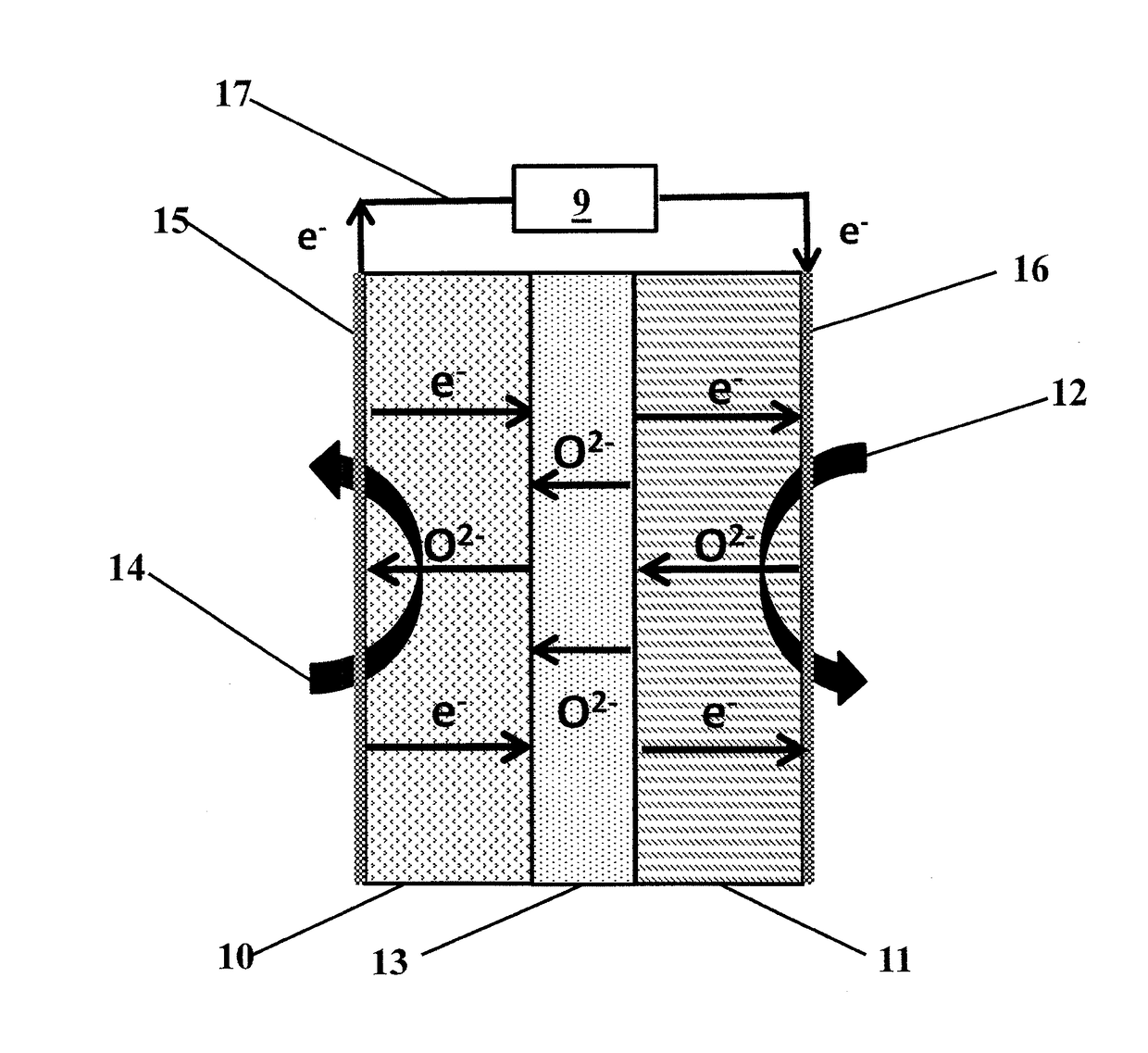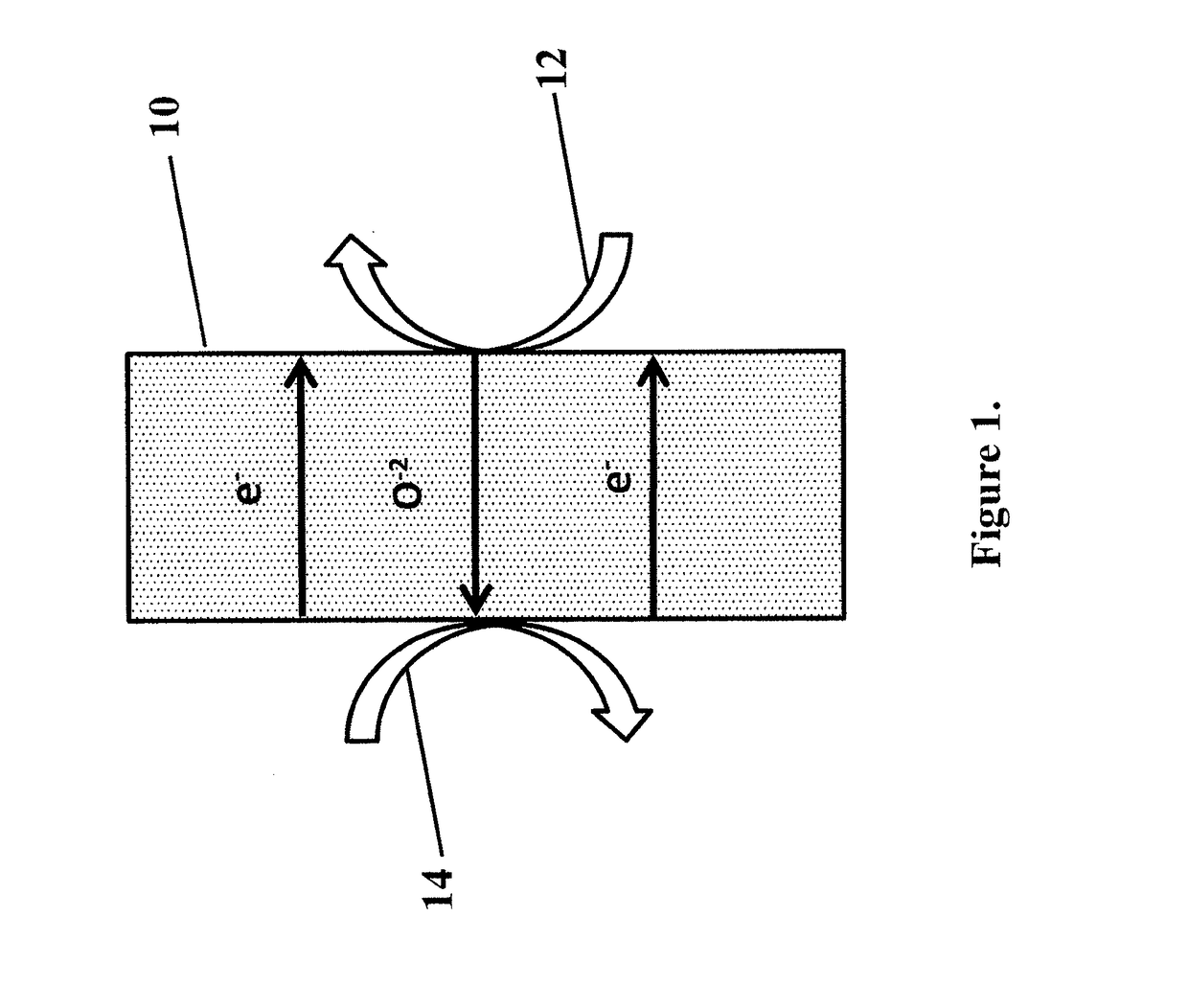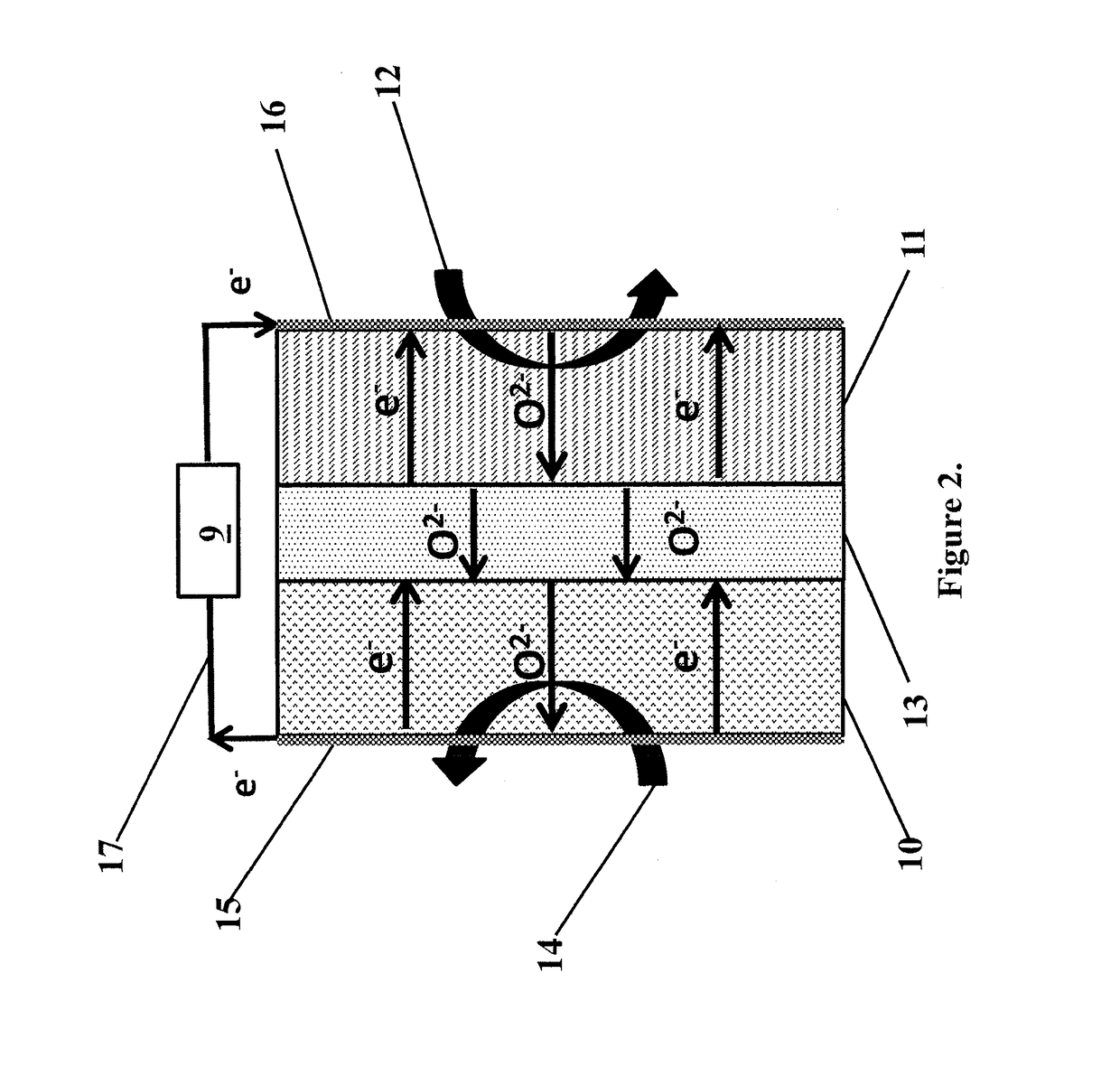Reactor, process, and system for the oxidation of gaseous streams
a gaseous stream and reactor technology, applied in the direction of electrochemical generators, metal/metal-oxide/metal-hydroxide catalysts, physical/chemical process catalysts, etc., can solve the problems of high cost of constructing conventional gas-to-liquid (gtl) plants, high capital investment, and high cost of constructing mega petrochemical chemical complexes. , to achieve the effect of higher molecular weigh
- Summary
- Abstract
- Description
- Claims
- Application Information
AI Technical Summary
Benefits of technology
Problems solved by technology
Method used
Image
Examples
example 1 (working example)
[0072]An anode catalyst was prepared by mixing 42.3 g of MgO, 32.3 g of MnO2, 11.3 g of H3BO3, and 4.5 g of LiOH in sufficient deionized water to make a thick slurry. After thoroughly mixing the slurry mixture in a rotating ball mill for 2 hours, the resulting mixture was dried in air for 12 hours at 110° C. Once dried, the dry composition was heated in a furnace, in air, from room temperature to 1,000° C. at a rate of 10° C. per minute and held at 1,000° C. for 16 hours. The resulting catalyst was compressed into a cylindrical pellet of approximately 2 mm diameter and 2.5 mm length using a hydraulic press at 30,000 psi, and the pellet was analyzed by AC Impedance Spectroscopy using an Autolab potentiostat from 1 to 1,000 Hz, in air, at temperatures between 750° and 850° C. The AC conductivity was determined from the high frequency range of the spectrum and the DC impedance was interpolated from the low frequency range. The results (shown in Table 2) were compared to known average v...
example 2 (working example)
[0073]A sample of catalyst from Example 1 was placed into a micro-fixed bed reactor and produced the following activity and selectivity for the conversion of methane to higher hydrocarbons in Table 3. The sample designated as MIECA is the anode material. The methane conversion observed was in a “redox” mode, which means that methane was converted over the catalyst in the absence of air. In a separate step, the catalyst was re-activated and re-oxidized with air. The activity for methane conversion in the absence of air demonstrates that this catalyst functions to store oxygen in its structure and performs as an MIEC material.
TABLE 3Catalytic OCM conversions with anode catalystCycle Length,% Methane% C2+% C2+Sec.ConversionSelectivityYield6058.758.726.7Conditions: MIECA catalyst from Example 1; 850° C., WHSV = 1 / hr, average over 5 redox cycles.
example 3 (working example)
[0074]A sample of catalyst from Example 1 was tested in a button SOFC test stand with a configuration similar to FIG. 1. The membrane electrode assembly was composed of a 32 mm diameter, 300 μm thick, 8-YZS electrolyte onto which a 50 μm lanthanum-strontium-manganite cathode layer was applied. The anode surface was composed of a 50 / 50 by weight mixture of anode catalyst from Example 1 and 8-YSZ nano-particles which had been screen printed to approximately a 50 μm thickness. The total electrode working area was 1.25 cm2. Electrical contacts on both the anode and cathode were made via a silver paste and mesh. When methane was introduced to the anode chamber and air to the cathode chamber, both at 900° C., the open circuit potential showed an induction period of about one hour, eventually stabilizing to about 0.8 V, as shown in FIG. 4 and as predicted by Table 1.
PUM
| Property | Measurement | Unit |
|---|---|---|
| electrical | aaaaa | aaaaa |
| crystal lattice structure | aaaaa | aaaaa |
| electronic conductive | aaaaa | aaaaa |
Abstract
Description
Claims
Application Information
 Login to View More
Login to View More - R&D
- Intellectual Property
- Life Sciences
- Materials
- Tech Scout
- Unparalleled Data Quality
- Higher Quality Content
- 60% Fewer Hallucinations
Browse by: Latest US Patents, China's latest patents, Technical Efficacy Thesaurus, Application Domain, Technology Topic, Popular Technical Reports.
© 2025 PatSnap. All rights reserved.Legal|Privacy policy|Modern Slavery Act Transparency Statement|Sitemap|About US| Contact US: help@patsnap.com



